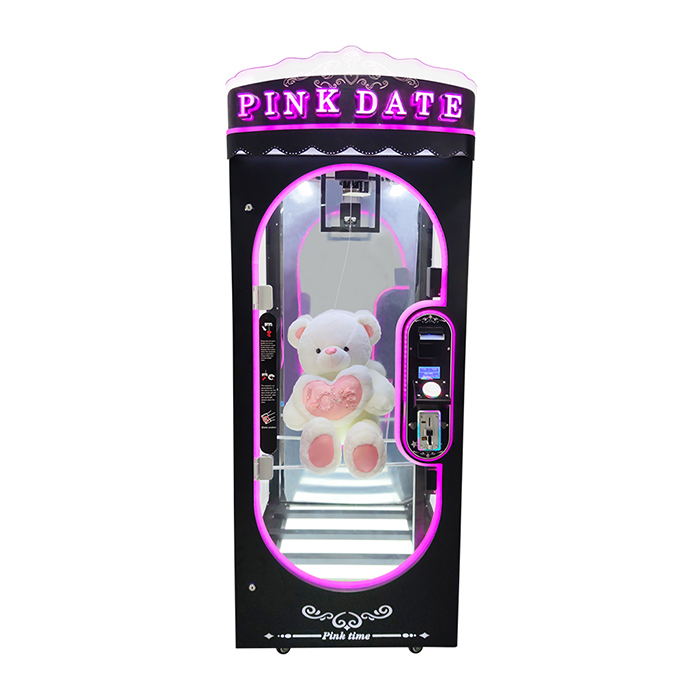Win the Cut the String game by choosing accessible prizes, practicing control precision, and timing cuts when the prize is most stable.
Table of Contents
ToggleUnderstanding the Game Mechanics
Overview of Cut the String Mechanics
The Cut the String arcade game combines skill, timing, and a bit of luck. The main goal is to maneuver a mechanical cutter controlled by the player to sever a string holding a prize. Typically, this prize hangs from a moving or stationary track, making precision crucial. Machine sensitivity varies, usually requiring players to adapt quickly to different responsiveness levels of the joystick or buttons.
Key Components of the Machine
There are three major parts to the game : control, cutter and the prize setup. Usually the control can be done with a joystick with some buttons that let the operator to move the cutter and activate cutting action. The cutter is a sharp blade or a heated wire, and must make clean contact with the string in order to cut it and free the prize.
String and Prize Mixing explained
In turn, the strings themselves can be thicker or slimmer and made of different materials leading to them being easier or harder to cut. Most prizes are typically hung anywhere up to height for the player or down under on a ledge or ridge, and it requires the player to judge depth and shot with accuracy. It is important to note (see what we did there) the way in which the string type looks to inform your cutting technique in order to increase your success rate.
How Machine Settings Affect Gameplay
Arcade owners can modify the sensitivity of the controls and the strength of the cutter. They matter, and they can make your difficulty level higher. For example, a joystick with a lower sensing might demand more forceful motions, or a less sharp blade may not be able to cut through your string the first time, requiring multiple cuts.
Strategic Positioning and Timing
Many successful players suggest to watch the machine for a while before play to help get an idea of the timings and movements most machines use. Not only how to cut but where and when to cut is also just as important. IF it is a prize that moves along a track then cutting as it speeds up near the starting line, slows down approaching the turn is just about to head towards you, your chances get increased.

Strategies for Success
Choosing the Right Machine
All Cut the String machines are NOT created equal. The machine should look in good condition and should run in perfect working order. Watching the game first is a must and this can be done by watching other players and checking responsivity of the controls and how the cutter behaves with the strings. This is the equivalent of slot machines in very high-traffic centers, potentially getting more maintenance and a higher chance of winning.
Identifying Accessible Prizes
Target those prizes near the starting position of the cutter or those dangling from strings looking as if they are frayed or thinned. These kinds of targets – and dealing with them, are relatively easier to manoveur and are of a higher success rate. Carefully situated attached rewards work around invisible walls, make specific strategic choices around other dangling prizes, or even not choose prizes in particular because of tricky obtacles in their paths.
Mastering the Controls
It is important that one get acquainted with the joystick or buttons. The sensitivity of each machine is slightly different and this impacts how accurate your movement will be. This was fun for a time, but learning to play around the lag of your actions and the response of the machine spent some time. This fact alone can increase your precision in string cutting by a very large percentage.
Optimal Timing and Precision
After all, just like aiming, cutting at the right time is equally crucial. This is best done around the area with the greatest stability of the prize, usually at the end of any set movement patterns. It minimizes the probability of distraction related to the thread through unnecessary movements. Being accurate is about learning where the cutter moves on the machine and taking your time to practice.
Learn from Every Attempt
Because every failure is a lesson in itself. Remember what you did that did not work — was it timing, was it the prize you selected, or the way you handled the control. Use this to modify your tactics and make improvements for the next try.
Techniques to Improve Accuracy
Practice Makes Perfect
Like any arcade game, Cut the String will take practice and skill to master. Regular sessions help you get to know how other strings responds to the clipper, be it a quick tickle, or a long stroking of the blade If you can, always video tape your sessions so you can see where you are going wrong, where you can improve your accuracy.
Adjusting for String Sway
It is common throughout many of the Cut the String games to have prizes that are lightly swinging or are affected by the airflow of the arcade. Notice the sway of the reel before attempting to play. This will enable you to envisage the right time to attack. If at any time you observe the string swings more around other spots, make sure it comes into stabilize, i.e. the path of the cutter, before you start moving.
Calibrating Your Movements
As these machines are usually generally calibrated in different ways, take initial few attempts to obtain a feel from the joystick sensitivity and press button responsiveness. Fine tune your control technique with these first tests. For instance if the joystick is too responsive, get used to use slower and accurate controls.
Using Visual Cues
The machine also provides quite a host of visual cues that go a long way. There are alignment marks or signs that will guide you with the procedure on many equipment. Consider these as references against which you can measure your cutting site. Align the cutter with these guides and you can improve your accuracy to an astonishing degree before you take a cut.
Mental Mapping
Take a moment to think through what you will do before you start your session. Imagine the motion you should do and the point at which you should be cutting. This way of mental rehearsal can cut your ready time when you are at the game if you doing it right – like waking up the brain and hand coordination and train them how to do the task.

Common Mistakes to Avoid
Overreaching for Difficult Prizes
A common pitfall for many players is aiming for the most visually appealing or valuable prize without assessing its practical accessibility. Select prizes that are easier to cut down, rather than those tucked away in hard-to-reach corners or surrounded by obstacles. This strategic choice often leads to a higher success rate.
Ignoring Machine Specifics
Cut the String trick setup also varies per each machine. Not adapting to the machine you play is a costly mistake. Take a few moments to test the controls and see how the cutter with interact with the strings. This initial observation may stop you from underestimating what youdo.
Rushing Your Attempts
Unlike traditional games of this type, speed is not your best friend in precision-based arcade mini-games. Most players cut the bank too quickly and end up offset, thus ruining the entire credit. Give yourself a second to get the cutter lined up properly, a few extra seconds of alignment can be the difference between a cut and a near cut.
Neglecting the Sway of the Prize
The prize on a string might sway slightly from the cutter’s motion, or from the movement of the world around it. This movement must be adjusted for or you will miss your shot over and over again. Observe the movement of the prize for approx a minute before playing and use this to try and time your shots whilst the prize is at its most stationary.
Underestimating the Importance of Positioning
You can see the angle and depth differently depending on where you are in relation to the machine. Being too close or too far, the wrong angle will distort your vision and alas the accuracy. Step right in front of the machine such that you have an unobstructed line of sight to the prize and the cutting tool.




